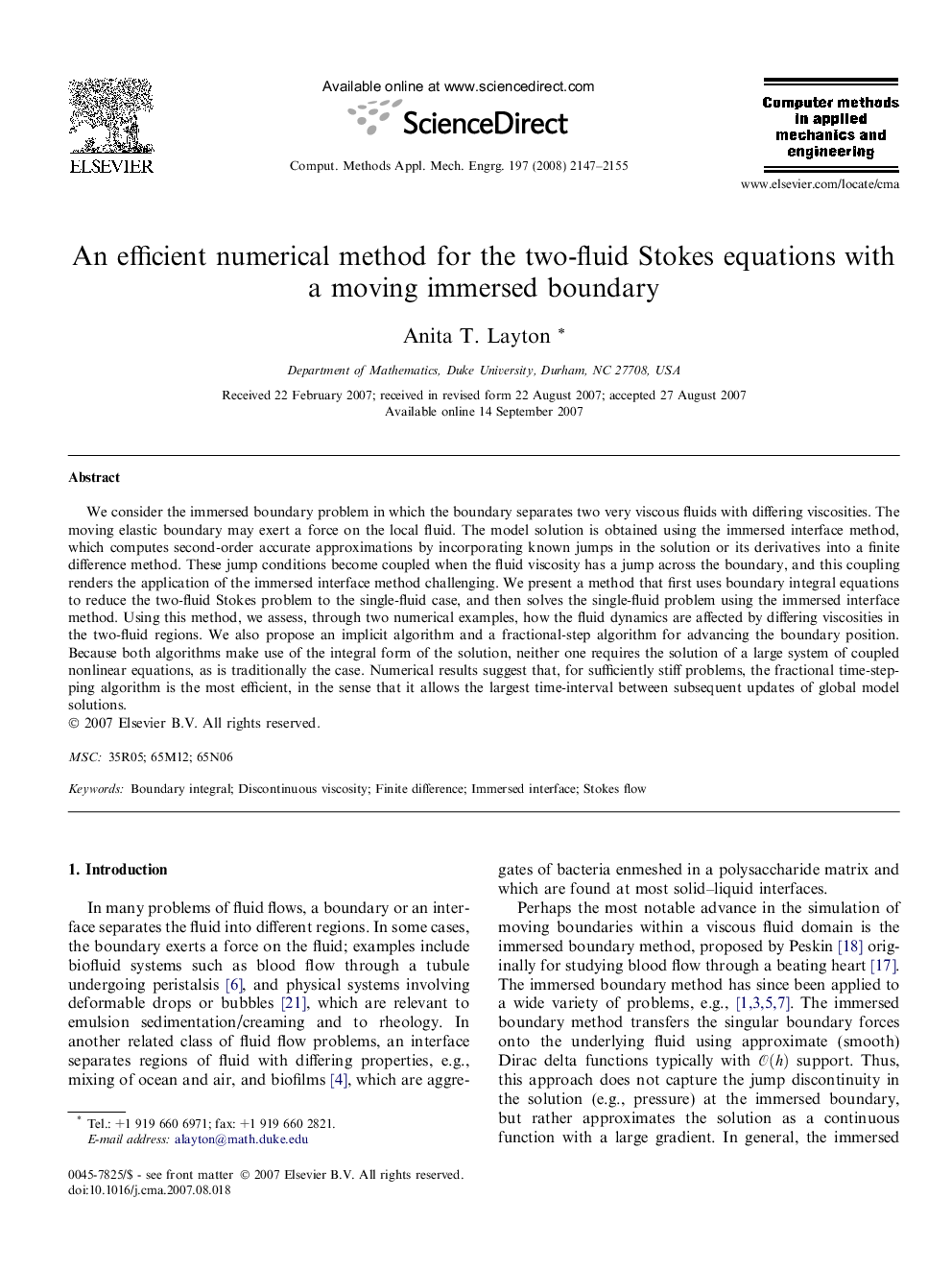| Article ID | Journal | Published Year | Pages | File Type |
|---|---|---|---|---|
| 499714 | Computer Methods in Applied Mechanics and Engineering | 2008 | 9 Pages |
We consider the immersed boundary problem in which the boundary separates two very viscous fluids with differing viscosities. The moving elastic boundary may exert a force on the local fluid. The model solution is obtained using the immersed interface method, which computes second-order accurate approximations by incorporating known jumps in the solution or its derivatives into a finite difference method. These jump conditions become coupled when the fluid viscosity has a jump across the boundary, and this coupling renders the application of the immersed interface method challenging. We present a method that first uses boundary integral equations to reduce the two-fluid Stokes problem to the single-fluid case, and then solves the single-fluid problem using the immersed interface method. Using this method, we assess, through two numerical examples, how the fluid dynamics are affected by differing viscosities in the two-fluid regions. We also propose an implicit algorithm and a fractional-step algorithm for advancing the boundary position. Because both algorithms make use of the integral form of the solution, neither one requires the solution of a large system of coupled nonlinear equations, as is traditionally the case. Numerical results suggest that, for sufficiently stiff problems, the fractional time-stepping algorithm is the most efficient, in the sense that it allows the largest time-interval between subsequent updates of global model solutions.
